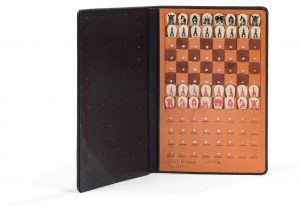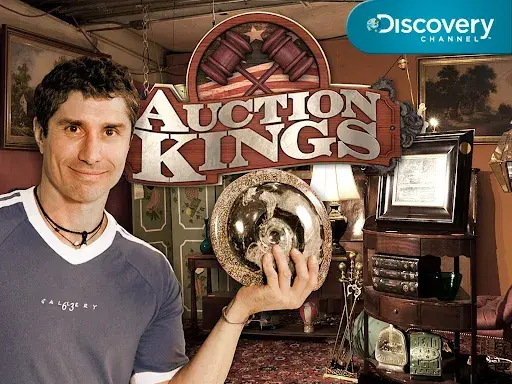Rare Mormon gold coins and Morgan Silver Dollars were hot commodities at Morphy’s record-setting $3.2M Premier Coins Auction
Boutique event was highest-grossing coin sale in Morphy’s history, topped by Kellogg & Humbert Assayers 48.70oz gold bar, $160K; and 1900 NGC $20 PF Ultra Cameo gold coin, $104K

DENVER, Pa. – At Morphy’s May 19 Premier Coins Auction, all that glittered was not gold, but it was a dazzling gold bar from California’s Gold Rush days that rose to the top of prices realized and capped a highly successful $3.2 million event for the Pennsylvania company. “We were ecstatic with the results. It was the highest-grossing coin sale in our history,” said Dan Morphy, who founded the eponymous auction house in 2003 and serves as its president and principal auctioneer.
The boutique sale of 187 lots exclusively featured a single-consignor collection that was the source of not only the gold bar but also a unique grouping of high-grade Morgan Silver Dollars and the largest offering of rare Mormon gold coins ever to come to public auction. “Nothing in the sale had a reserve,” Morphy said. “We were very confident that collectors would recognize the rarity and exceptional quality of everything in the collection and that they would bid accordingly.”
The 48.70oz gold bar that led the boutique array of rare coins and currency was issued by Kellogg & Humbert Assayers, a highly-regarded San Francisco firm that operated from 1855 until around 1860. Embossed with the firm’s name as well as the stamped markings No. 491, 871 FINE and the price $876.85, the bar combined intrinsic mineral value with historical importance from California Gold Rush era, making it irresistible to many collectors. It prompted numerous enquiries prior to the sale and on auction day was chased to a final price of $160,000, the exact high estimate that had been assigned to it.
The auction’s highest-priced coin was a 1900 $20 gold coin described as PF64 Ultra Cameo. The term “Cameo” refers to the contrast between the design – whether raised or recessed – and the background field, which renders a frosted appearance with a polished, mirror-like background. An Ultra Cameo, like the $20 coin in the auction, exhibits a superior level of cameo contrast as compared to a standard Cameo proof. Estimated at $50,000-$70,000, the prized coin commanded a premium price of $104,500. Also in the Cameo realm, an 1895 Morgan Silver Dollar PCGS-graded PR63+CAM (Proof Cameo), CAC-certified and estimated at $40,000-$60,000, was bid to $79,200.
An 1893-CC Morgan Silver Dollar PCGS-graded MS65 came from the legendary frontier mint in Carson City, Nevada, and was struck in the mint’s final year of operation following the closure of the tapped-out Comstock Lode silver mine. It sold above its high estimate for $92,250.
Another Silver Dollar that made the top 10 was an 1889-CC Morgan Silver Dollar PCGS-graded MS64 Gold River, an industry reference to the ore’s source, e.g., a river, or area adjacent to a river where gold was once mined. Also from the aforementioned frontier mint in Carson City, Nevada, it exceeded its high estimate with a selling price of $62,400. An even earlier coin, an 1893-S Morgan Silver Dollar struck at the San Francisco Mint, AU55+ PCGS, changed hands for $54,000 against an estimate of $35,000-$45,000.
The very special grouping of 15 Mormon gold coins added great interest and cachet to the auction lineup. Only 4,000 Mormon coins, more or less, were privately issued by The Church of Jesus Christ of Latter-day Saints between 1848 and 1860. All were minted in Salt Lake City in $2.50, $5, $10 and $20 denominations and initially composed of gold found at Mormon Island, California. During the last year of production, the gold used in Mormon coins came from a Colorado source. Some of the coins are decorative, with iconography such as a lion, a beehive or stars, and are inscribed in the Deseret alphabet with a phrase that translates to “Holiness to the Lord.”
An extremely rare and desirable 1860 Mormon $5 gold coin, PCGS-graded AU53, was embossed on its obverse side with its date and an appealing image of a recumbent lion encircled by an inscription in the Deseret alphabet. On the reverse, it showed a spread-winged eagle perched on a bundle of arrows known as “fasces,” encircled with the phrase DESERET ASSAY OFFICE / PURE GOLD / 5D’ and with a superimposed beehive to represent the valued Mormon virtue of industry. It surpassed its $40,000-$60,000 estimate to achieve $80,400.
Equally attractive, an elusive 1850 Mormon $5 gold coin, NGC-graded AU55+, was designed on its obverse side with the image of clasped hands in a handshake encircled with G.S.L.C.P.G. (Great Salt Lake City Pure Gold) and the denomination FIVE DOLLARS. On verso, it was adorned with stars and other iconography, and encircled with Holiness To The Lord. Estimated at $30,000-$40,000, the coin defied expectations, selling for $60,000.
To discuss consigning coins, currency, ingots, other monetary instruments or precious metals to a future auction at Morphy’s, whether a single item or an entire collection, please call Dan Morphy at 877-968-8880 or email [email protected]. Visit Morphy’s online at www.morphyauctions.com.










